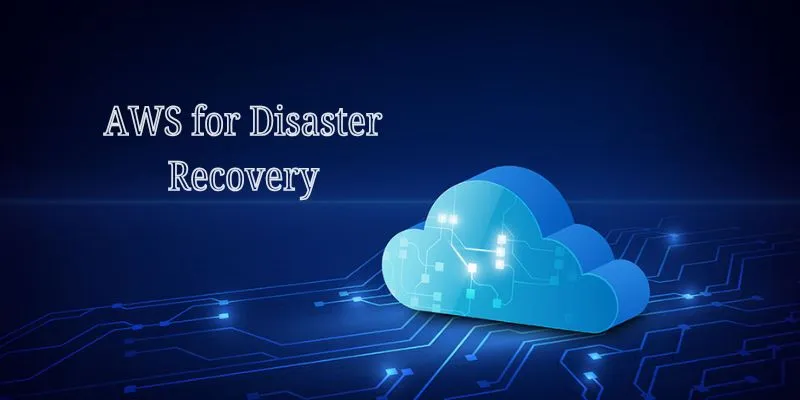
In today’s fast-paced digital world, businesses rely heavily on data and technology to keep things running smoothly. But what happens when something unexpected, like a server failure or a cyberattack, disrupts operations? That’s where disaster recovery and business continuity come into play. If you’re wondering how AWS (Amazon Web Services) fits into this equation, you’re in the right place. Let’s break it down in a way that’s easy to follow, whether you’re a tech enthusiast or a business owner exploring options. AWS steps up as a game-changer by offering scalable, reliable, and cost-effective solutions for disaster recovery and business continuity. If you’re taking AWS Training in Chennai, you’ve probably heard about its powerful tools and features designed to keep businesses resilient in the face of challenges.
Why Disaster Recovery and Business Continuity Matter
Imagine this: your business website suddenly goes down during a peak sales period. Or worse, sensitive customer data is lost due to a system failure. The financial and reputational damage can be enormous. That’s why disaster recovery is all about preparing for the unexpected, ensuring that critical systems and data can be restored quickly. Business continuity, on the other hand, is the bigger picture—it’s about keeping operations running, no matter what.
How AWS Supports Disaster Recovery
AWS provides an extensive range of services that simplify disaster recovery planning and execution. Let’s look at a few key aspects:
1. Scalable Storage Solutions
AWS offers cloud-based storage services like Amazon S3 (Simple Storage Service) and Amazon EBS (Elastic Block Store). These tools allow businesses to store data securely with the flexibility to scale up or down based on demand. What’s great is that you only pay for what you use, making it a budget-friendly option for startups and enterprises alike.
2. Backup and Restore
AWS Backup automates and centralizes data backups across various AWS services. With features like encryption and versioning, you can ensure data integrity and compliance with industry standards.
3. Replication Across Regions
AWS enables businesses to replicate data across multiple geographic regions. For example, using Amazon RDS (Relational Database Service), you can create standby databases in different locations. This ensures minimal downtime and data loss in case of a disaster. Start your learning journey at the AWS Training in Marathahalli.
4. Failover Mechanisms
Tools like Amazon Route 53 and Elastic Load Balancer help reroute traffic to backup servers during system failures. This seamless switch ensures that customers experience minimal disruption, which is a lifesaver for businesses aiming for uninterrupted service. This is especially useful for businesses undergoing AWS Training in Bangalore, as they learn how to implement these solutions effectively.
What are the Benefits of Using AWS Glue for ETL? AWS Glue simplifies ETL by providing a fully managed, serverless service that automates data discovery, transformation, and loading. With built-in scalability, cost-efficiency, and seamless integration with AWS services, it accelerates data processing and enhances analytics.
Building a Business Continuity Plan with AWS
Disaster recovery is only one side of the coin. Business continuity planning ensures that all parts of your business keep running smoothly, even during a crisis. Here’s how AWS supports this:
1. Cloud-Based Workspaces
AWS WorkSpaces provide virtual desktops that employees can access from anywhere, enabling remote work during emergencies. This is particularly useful in scenarios like natural disasters when accessing physical office spaces isn’t an option.
2. DevOps Practices
DevOps is integral to modern business continuity planning. By automating workflows and deploying updates rapidly, companies can minimize disruptions. If you’re enrolled in DevOps Training in Chennai, you’ll learn how AWS integrates seamlessly with DevOps tools like Jenkins, Docker, and Kubernetes.
3. Resilient Architectures
AWS encourages businesses to design for failure. By implementing multi-AZ (Availability Zone) deployments, your systems can remain functional even if one zone goes down. This strategy is especially valuable for businesses in critical industries like healthcare and finance.
4. Testing and Drills
One of the key elements of a strong business continuity plan is regular testing. AWS allows you to simulate disasters and test your recovery processes without impacting real operations. For example, using AWS CloudFormation, you can create and tear down environments quickly for drills.
Getting Started with AWS
If you’re new to AWS or feel overwhelmed by its vast ecosystem, don’t worry. Start small and build your way up. Begin by identifying your business’s critical data and applications, then explore AWS services that align with your needs.
For instance, businesses and IT professionals often opt for DevOps Training in Bangalore to gain hands-on experience in creating automated workflows on AWS.
In a world where downtime can cost businesses thousands—if not millions—of dollars, disaster recovery and business continuity are non-negotiable. AWS simplifies this process by providing scalable, reliable, and cost-efficient solutions that cater to businesses of all sizes. Also, check out the Training Institute in Bangalore.